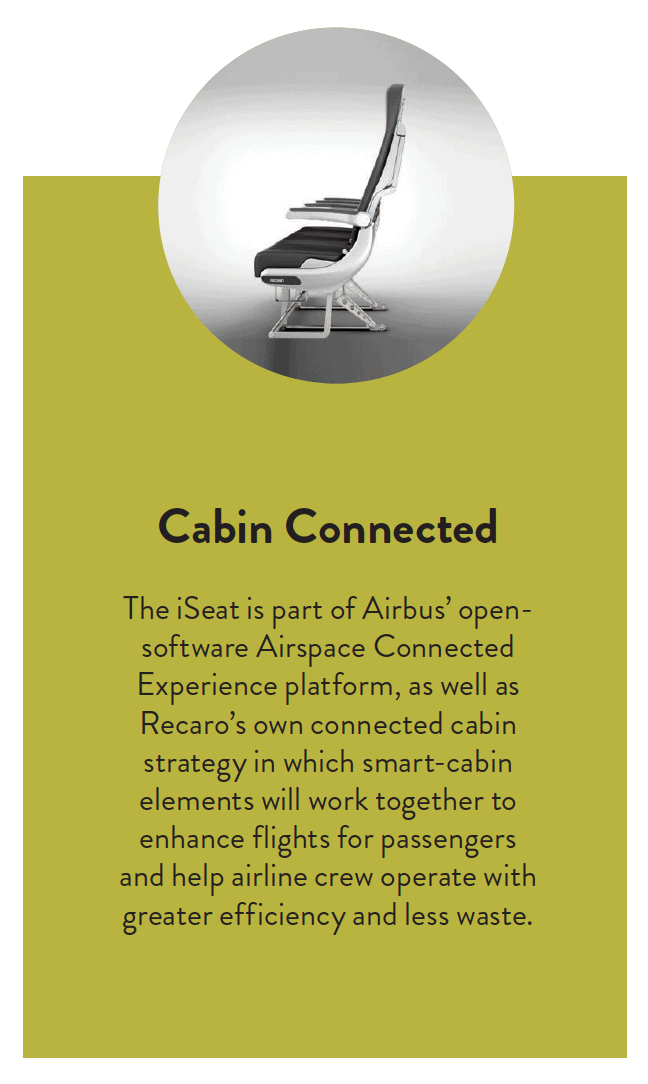Recaro’s iSeat is part of a larger connected ecosystem meant to streamline flight operations and inform the next generation of comfort.
Several of Recaro Aircraft Seating’s sensor-equipped BL3530 iSeats are now in service aboard a TAP Air Portugal Airbus A321 aircraft, marking the first time an “intelligent” seat has made its way into the economy cabin. Besides improving crew efficiency during takeoff and landing and being capable of predictive maintenance, these seats can create a high-level picture of passenger needs – and inform Recaro’s next generation of aircraft seating.
The iSeats are indistinguishable on the outside from their less intelligent cousins, but they gather data on passenger behavior, such as when the seat is occupied, and how many times a passenger deploys the tray table, raises the armrests or reclines the seat. They also record whether a seatbelt is fastened, and that a seat is in full upright position. “We believe that a ‘smart’ seat will have the most impact on safety-of-flight operations,” says Dr. Mark Hiller, CEO of Recaro Aircraft Seating. “Passenger comfort such as temperature, recline and cushion pressure is another development we are looking at,” Hiller adds. On long flights, the seat could remind the passenger to stretch or help them get higher-quality rest.
 Recaro’s iSeats were slated for a six-month trial with TAP, which began in September last year, with data pulled on a bimonthly basis. “There are more ideas for further developments and further sensor installation, but we wanted to start with something more basic as a proof of concept and set up a process that then could be utilized for a more extensive array of sensors,” says Nuno Leal, head of Fleet Planning and Contracts at TAP.
Recaro’s iSeats were slated for a six-month trial with TAP, which began in September last year, with data pulled on a bimonthly basis. “There are more ideas for further developments and further sensor installation, but we wanted to start with something more basic as a proof of concept and set up a process that then could be utilized for a more extensive array of sensors,” says Nuno Leal, head of Fleet Planning and Contracts at TAP.
Leal hopes the data culled from the seats will improve the seat development process in the future. “The development of new seats is typically based on subjective ideas and perceptions of comfort and behavior, not on an empirical approach like this one,” he says. “We hope, down the line, this will result in a better seat, more tailor-made to our passengers’ requirements.”
“Raising Seat Awareness” was originally published in the 10.1 February/March issue of APEX Experience magazine.


